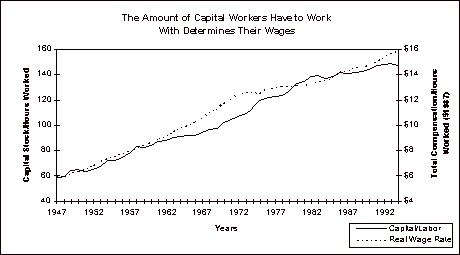Because FairTaxers preach that a major benefit of your plan is that the employee gets to keep his whole paycheck.
For a good reason, the employee will receive the contracted gross wage currently on his paystub with no federal income or SS/Medicare taxes withheld
If this is true, then much of the so-called embedded taxes will still be in the cost of goods and prices can not come down 20-30%.
Wrong as the price (20-30%) decline at producer level is due to multiple factors at the business level, repeal of the taxes businesses pay per-se, reduction in tax system related costs on the employer that go away when business taxes are repealed, and consequent increase in productive capacity that occurs from which lower prices make up in increased demand for product optimizing business profits at lower price higher volume point on the supply demand equilibrium relation.
Overall price received by producers will fall appreciably in most sectors of industry from market competition for maximizing profit utilizing the reduction in business costs and business taxes repealed to achieve a more efficient and productive return on their resources.
If you were honest in your presentation, you would inform people that for this plan to work as modelled, they must take a pay cut.
Perhaps you will explain for us how the contracted gross wage on your pay be cut, when your employers tax and tax related costs are removed. From whence does any pressure for this imagined pay cut come from?
Seems to me with a growing economy arising from more efficient business operations and increased capital investment providing additional implementation of technological productivity improvements, wages are more likely to increase with productivity and time than to fall as you seem to think.
Virtually all economic models project a much healthier economy if a federal sales tax replaces the current tax system. These models typically project that the economy will be 10 to 14 percent larger in 10 years.[2] A dynamic, growing economy will provide more and better paying jobs. Employers will need more and better-trained workers.
FIGURE 1: This figure shows the positive correlation between real wage rates and capital investment per hours worked, from 1947 to 1992. During this time period, the amount of capital per hour worked increased steadily and
these increases led to increases in real wage rates over the same time period.
